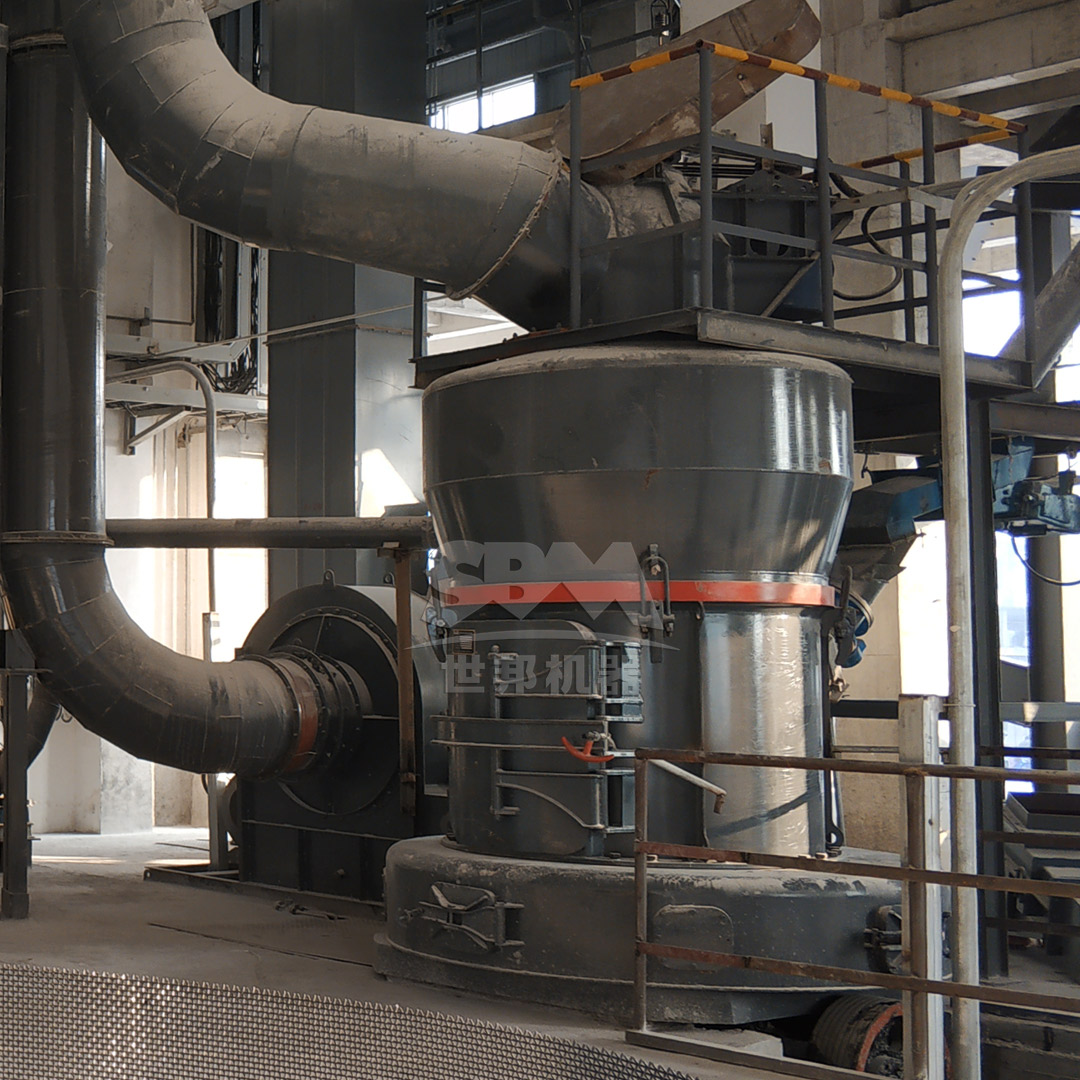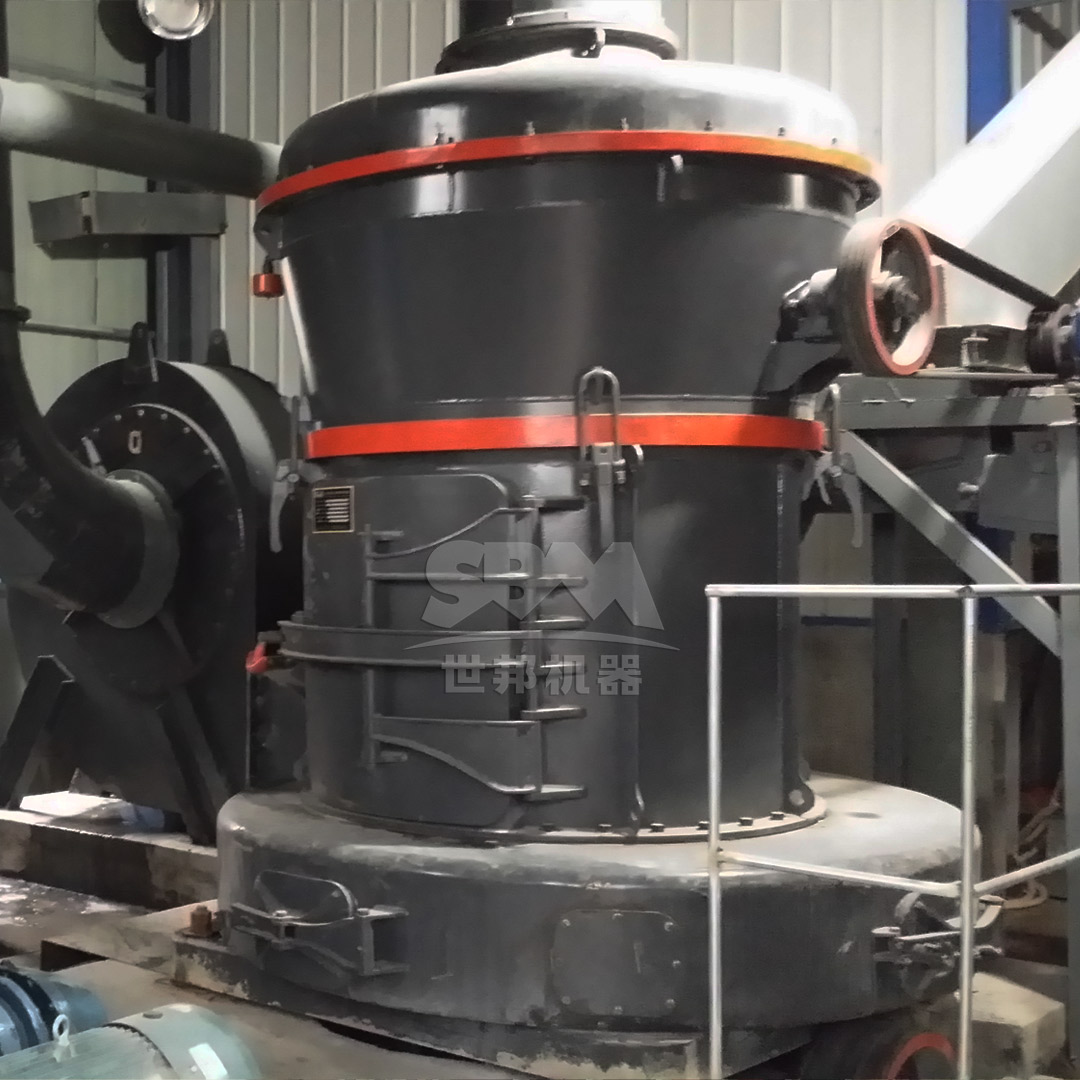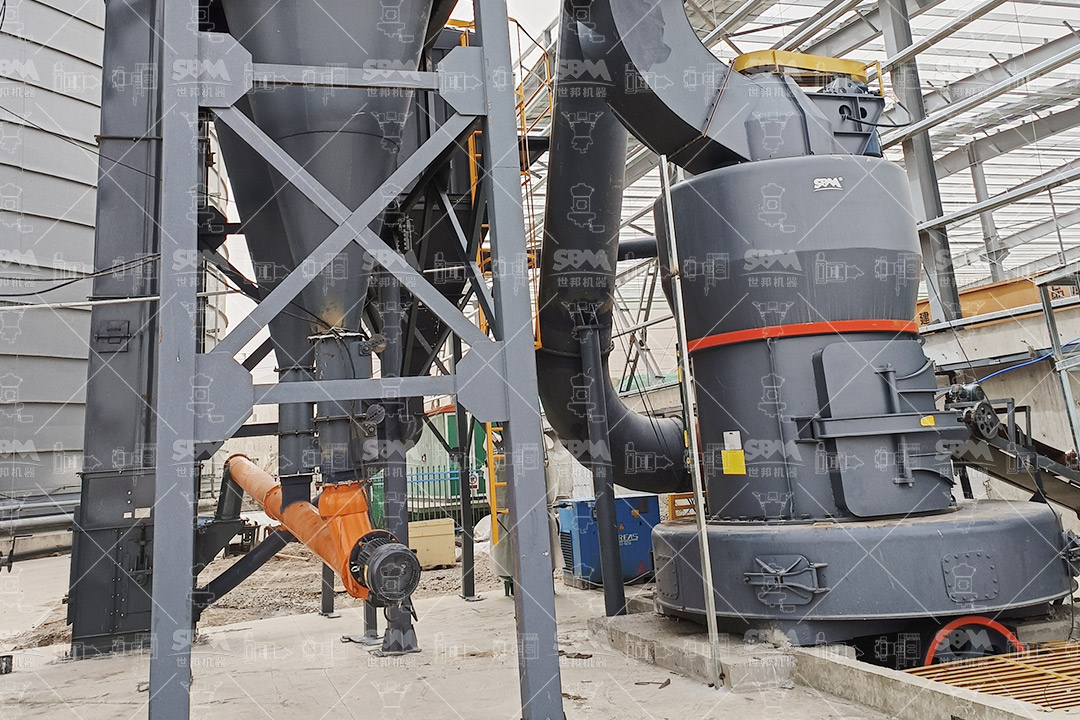Barite (barium sulfate) is a critical weighting agent in oil drilling mud, essential for controlling well pressure and stabilizing boreholes. The grinding process transforms raw barite ore into fine powder meeting API specifications (density ≥4.2 g/cm³, particle size distribution 3-15% residue on 325 mesh). This guide explores the production process and recommends optimal grinding equipment for barite processing plants.

Raw barite ore (≤200mm) undergoes primary crushing (e.g., jaw crusher) to reduce size to ≤50mm. Magnetic separation removes iron impurities to prevent equipment damage and ensure product purity.
Moisture content must be reduced to <1% to optimize grinding efficiency. Rotary dryers operating at 200-300°C are typically employed.
The core stage where barite reaches target fineness. Equipment selection depends on required capacity and particle size distribution:
| Equipment Type | Output Fineness | Capacity Range | Energy Consumption |
|---|---|---|---|
| Raymond Mill | 80-325 mesh | 3-20 t/h | Medium |
| Ball Mill | 200-400 mesh | 5-100 t/h | High |
| Ultrafine Mill | 325-2500 mesh | 0.5-25 t/h | Low-Medium |
Air classifiers separate particles by size, ensuring consistent product quality. Cyclone collectors and pulse bag filters achieve >99.9% collection efficiency.
Finished barite powder is packed in 25-50kg bags or bulk containers with moisture-proofing measures.

For high-precision barite grinding requiring 325-2500 mesh fineness, our SCM Ultrafine Mill delivers exceptional performance:
The mill operates via main motor-driven multi-layer grinding rings. Material is centrifugally dispersed into grinding tracks, progressively crushed by rollers, and finally collected by cyclone and pulse dust removal systems. Models range from SCM800 (0.5-4.5 t/h, 75kW) to SCM1680 (5.0-25 t/h, 315kW), catering to various production scales.
For operations targeting 30-325 mesh fineness with higher capacity requirements, the MTW Series Trapezium Mill offers:
Its working principle involves grinding rollers rotating around the central axis while self-rotating to generate centrifugal force. Shovels throw material between rollers and grinding rings for efficient compression crushing, with a grading system controlling final particle size. Model MTW215G handles up to 45 t/h with 280kW main motor power.
Barite for drilling mud must meet API 13A specifications:
| Parameter | API Requirement | Testing Method |
|---|---|---|
| Density | ≥4.2 g/cm³ | Pycnometer |
| Water-soluble alkaline earth metals | ≤250 mg/kg | ICP-OES |
| Residue on 325 mesh | ≤3.0% | Wet sieving |
| Particle size distribution | ≤30% <6μm, ≤3% >75μm | Laser diffraction |
Regular sampling and particle size analysis ensure consistent quality. Modern mills with automated control systems maintain tight tolerances through real-time monitoring and adjustment.

Selecting the appropriate grinding equipment is crucial for producing API-compliant barite powder efficiently. For ultra-fine applications (325-2500 mesh), the SCM Ultrafine Mill provides superior energy efficiency and precise particle control. For coarser requirements (30-325 mesh) with higher capacity needs, the MTW Series Trapezium Mill offers robust performance and lower operating costs. Both solutions incorporate advanced dust collection and noise reduction features, ensuring environmental compliance and operator safety. Proper equipment selection, combined with rigorous quality control, enables producers to meet the exacting standards of the oil and gas industry while optimizing operational efficiency.